Punjab is the land of culture, traditions and well-preserved heritage. When it comes to folk culture, the Punjabis are known for their enthusiastic at
Punjab is the land of culture, traditions and well-preserved heritage. When it comes to folk culture, the Punjabis are known for their enthusiastic attitude and the will to preserve and carry on their culture through generations. Punjabi folk dances are one of the most prominent features of their well-kept traditions. Known for their high spirits literally and metaphorically, the Punjabi folk dances are packed with incredible enthusiasm, joyous expressions and immense vibrancy. Even if you are a non-dancer, you will be tempted to put on your dancing shoes and dance your heart out. These dances are accompanied with rhythmic drum beats and equally colourful folk songs.
Here is everything you need to know about the different types of folk dance of Punjab:
1. Bhangra Dance
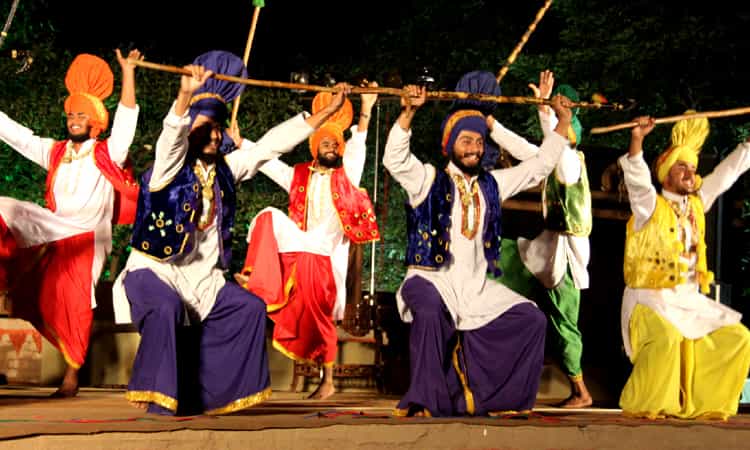
This is one of the most popular forms of traditional folk dance from Punjab that has taken the world by a storm. Originating in the Sialkot region of Punjab this dance is done to resonate their good feeling and happiness after a good and prosperous harvest. Bhangra is widely associated with the vernal Vaisakhi festivals. The dance is made up of some of the most energy fuelled steps that involve leaps, vigorous kicks with both the hands held high on either sides of the head. The dance is traditionally done along with folk music called Boliyan which is sung to the beats and music created by the drums or Dhol. Over time, Bhangra has also turned into a very healthy form of aerobics that people do to shred a couple of kilos.
2. Giddha Dance
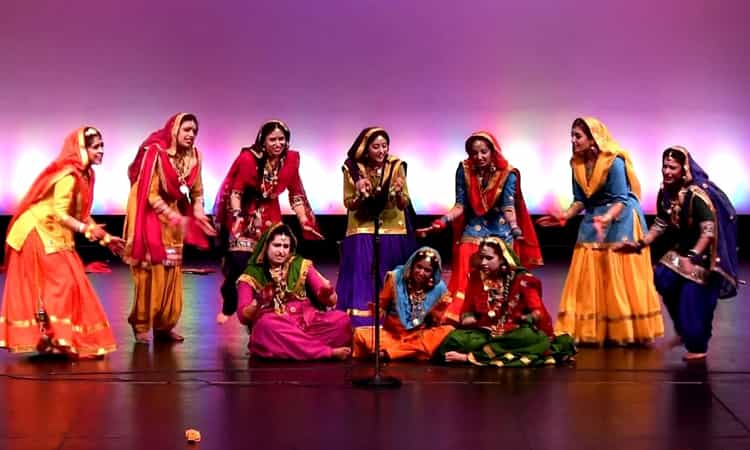
This delightful dance, performed traditionally by Punjabi women, can be described to be just as energetic as bhangra. Derived from the ancient dance form called ring dance, Giddha displays feminine energy, elegance and flexibility all at once. Women wear traditional, colourful salwar suits, and perform this dance during festive occasions. The main feature of this dance is the rhythmic clapping of both hands to the beats of the dhol and songs that are mainly performed by old women of the community. The songs recited during the dance tells us about the life and experience by these women which is narrated by the lead singer in the group of dancers. It is one of the most engaging dances in Punjab that became especially prominent after the 1950s. Currently, regular Giddha competitions are held all over Punjab.
3. Jhumar Dance
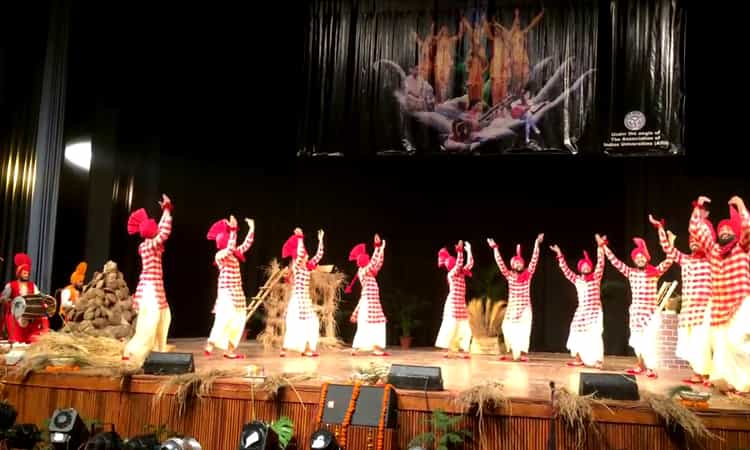
Originating in Multan and Balochistan, the Jhumar Dance of Punjab is a lively dance and musical performance that is a treat to witness. As compared to other Punjabi folk dances, Jhumar involves much slower and more rhythmic. The term Jhumar is derived from the word Jhum meaning swaying. This is inspired from the feeling Jhumar songs evoke which is of swaying in a peaceful manner. The content of the song ranges from love songs to emotional ones. Usually performed during wedding ceremonies, the dance is a living representation of happiness. The dance recreates animalistic movements, Ploughing of fields, sowing of seeds and harvesting. The dance is also performed in the form of a circle to the tunes of emotional music.
4. Malawi Dance
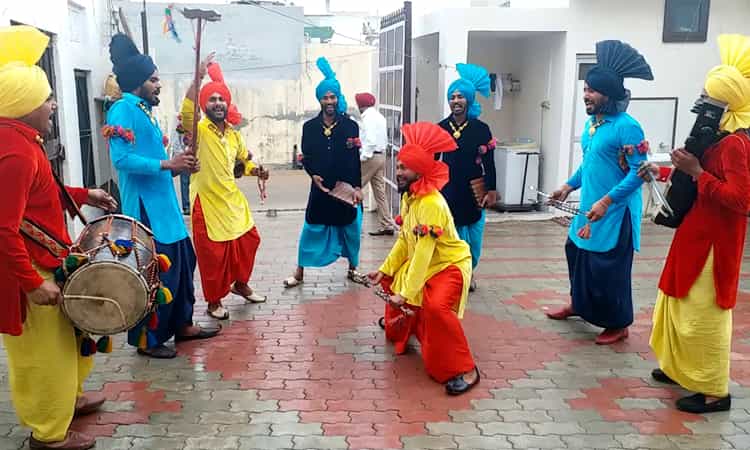
If you thought that Giddha is only limited to women then think again. Malawi Giddha is the folk male dance that originated from the Malwa region in Punjab. This dance was originally performed by the older men of the region but over time even younger men have started performing this dance. The dance includes teasing of other people in bollian or folk poetry. The dance can be commonly seen being done during fairs or folk festivals. The dance is performed against the music produced by traditional folk instruments like Tumbi, Chimta, Kato, Kartara etc. Malawi has become one of the signature folk dances of the region’s bachelors. Witnessing the dance is an incredible feeling where the air gets filled with an energetic vibe.
5. Sammi Dance
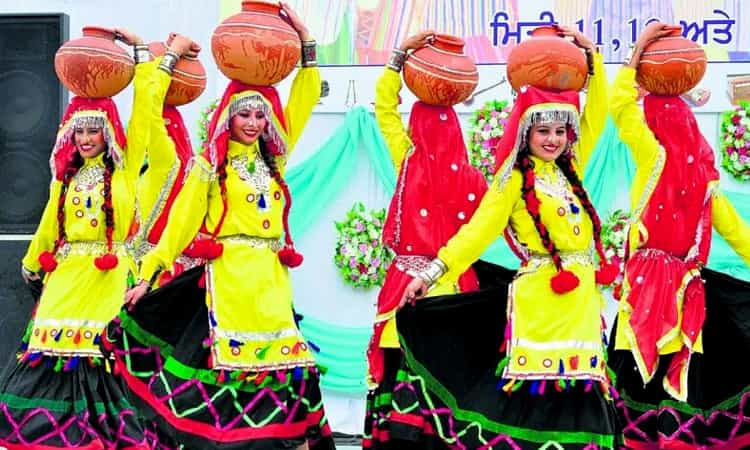
Punjab is home to a variety of tribes residing here since centuries. These tribes have their own forms of art, culture and expression. Sammi is one of the traditional dance forms from one of the tribal communities in Punjab. The dance is very popular in the Sandalbar area of Punjab in Pakistan. The dancers can be seen wearing bright traditional kurtas with long, full-length flowing lehengas accompanied with a pretty unique silver hair ornament which is associated with the dance. Just like Giddha, Sammi is also performed in a circular arrangement. They stand in a ring and swing their hands together from side to side.
6. Kikli Dance
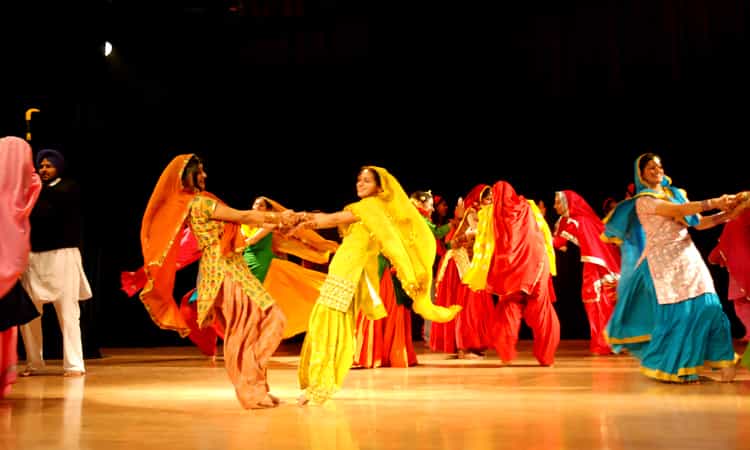
Kikli is one of the major female folk dances in Punjab. In this energy-packed performance two women dancers hold each other’s hand and whirl and twirl each other around. Young girls perform this dance in pairs while wearing colourful and vibrant traditional Punjabi clothing which is normally a flowing glittering Kurta. One can call this dance more of a sport than an art form. They can be seen whirling around so fast that the dupattas on their head start fluttering and the other spectator ladies urge them to go faster and faster. They dance to a variety of songs and are not limited to a particular occasion.
7. Gatka Dance
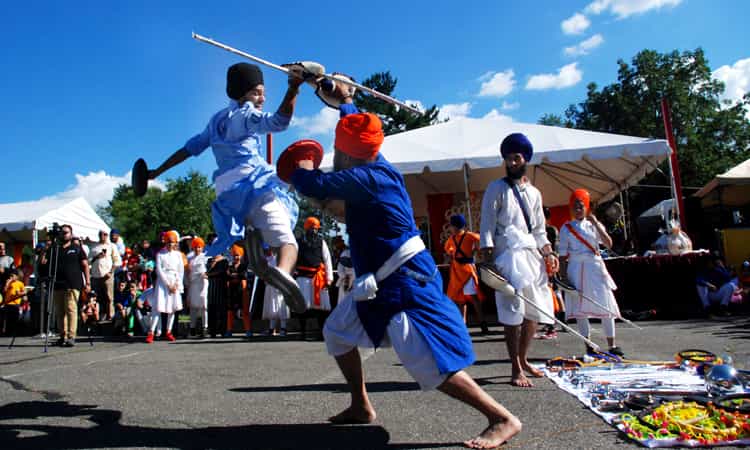
Originating in Punjab during the 15th century, Gatka is more of a martial arts dance form that is extremely unique and distinct to the state of Punjab. The dance is a form of stick fighting where the sticks are symbolic of a sword. The term Gatka also refers to these sticks used in the performance. The theories and techniques of Gatka were seriously taught to the students by their gurus. The Gatka is not just a simple dance form but its methods were utilised during actual war time. It originates from the desire to defend righteousness through mind-body unification.
8. Luddi Dance
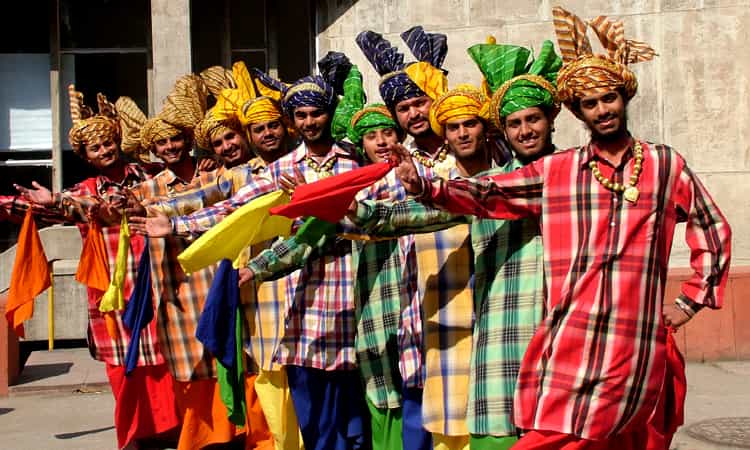
Adding to the list of energetic dance forms Luddi is another one. The traditional folk dance is performed by both men as well as women wearing their brightest, most vibrantly coloured traditional Punjabi clothing. The dancers arrange themselves in circles while producing sounds by clicking and clapping their hands accompanied with occasional jumps and half-turns. Luddi is performed as a part of some celebration or the other. This includes victory in sporting events while it can also be seen being performed in marriages. Musical instruments used in this performance are Dhol, drums and Shehnai.
9. Jaago Dance
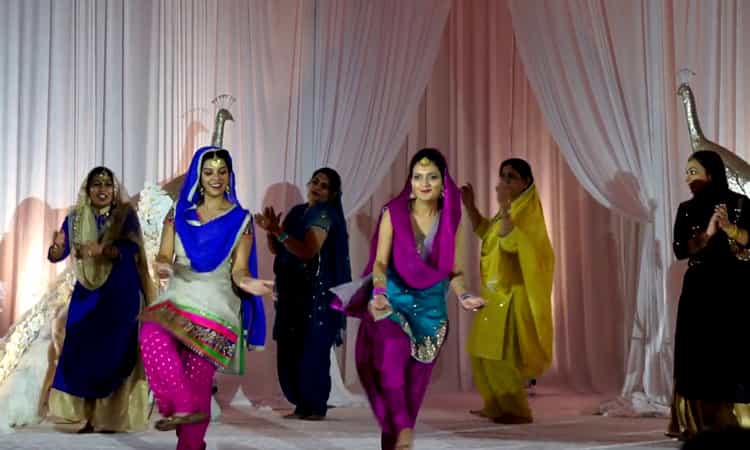
Performed during weddings and other equally special occasions, Jaago is one of the most popular dance forms in Punjab. The term Jaago is derived from the Hindi term Jago meaning wake up! The dance performance is so electric and encapsulating that just like its name it invites people to wake up, stand up and join in on the dance. This beautiful traditional Punjabi dance ensures a conjugal bliss and due to its importance it is widely performed during weddings and marriage processions. A makeshift effigy is created and put on top of the groom’s mother’s head brother’s wife while they enter the village during the wedding procession accompanied with energetic representation of this dance.
10. Dankara Dance
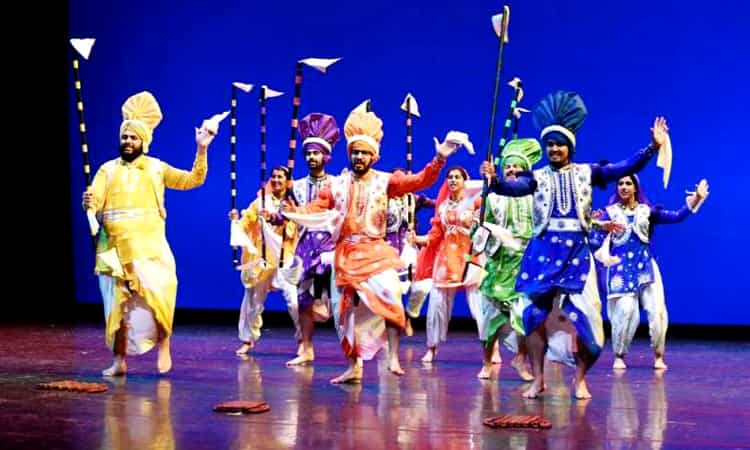
Traditional Punjabi dance involves lots of movement, vigorous gestures and energy-packed performances. Every step is done with a lot of enthusiasm which makes it an absolute delight to be a part of. The dance is the mark of any celebration. As a part of the dance two men can be seen holding hands where each man has a colourful stick in one hand. They dance around each other while occasionally tapping sticks and creating a rhythmic movement. Often performed during marriages, wedding processions and other special occasions it is one of the most interesting dance forms of Punjab.
11. Julli Dance
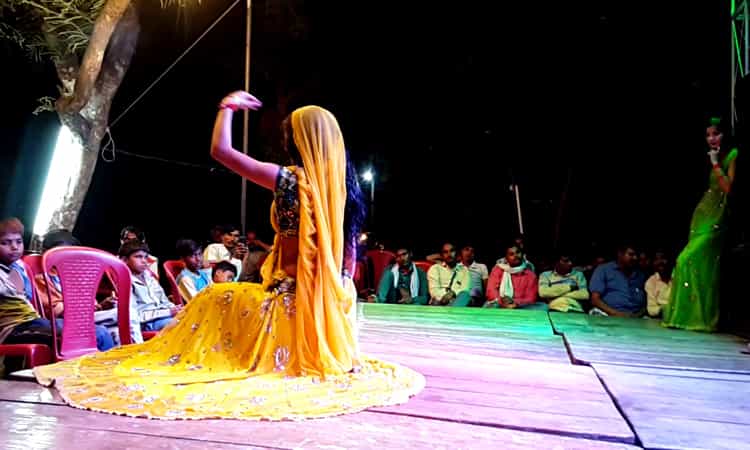
Punjab is home to a variety of traditions, beliefs and communities. Each community has thrived immensely over the years and has stayed in harmony with each other. When it comes to dancing Punjabis love any sort of it. Julli is a type of traditional dance that is performed mainly by the holy men or Juli called Pirs. Their traditional dance performance location is at their hermitage that is locally known as Khangas. This unique dance involves sitting in one place and dancing. In some cases they can be seen wearing entirely black clothing and sitting around the graves of the preceptor while dancing.
12. Dumhal Dance
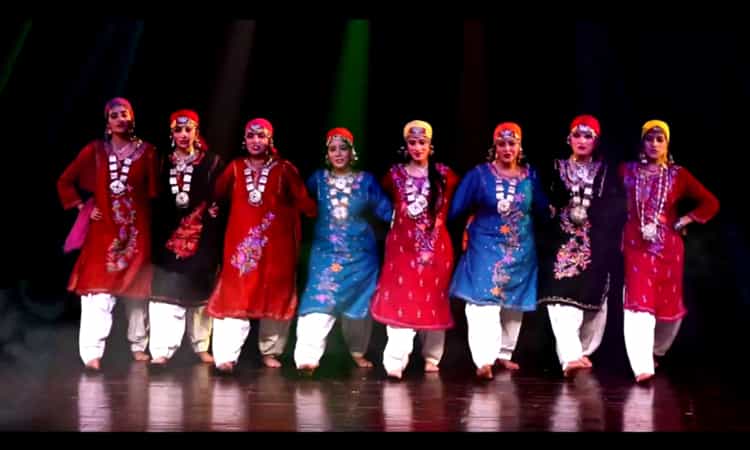
Famous across the whole state of Punjab, Dhumall is a famous traditional folk dance. Due to the nature of the dance and the enthusiasm attached to it, the dance is often referred to as Dhamal since it is extremely happy, enthusiastic and exciting. The dance is done only by the male population of the state who stand in constantly moving, small circle formation. The drummer grabs the centre spot in the circle and the dance is commenced to the beats of the drums. Other than the dance, the best part about the dance is the colourful turbans worn by each performer as well as the Ghungroos. The steps are somewhat similar to that of Bhangra while the energy also remains the same.
Frequently Asked Questions (FAQs)
Q. What Are Some Must Visit Places In Punjab?
Ans. Some must visit places in Punjab are: Golden Temple, Jallianwala Bagh, Wagah Border, Rock Garden, Bhatinda, Jalandhar, etc.
Q. What Is The Road Distance Of Punjab From Delhi?
Ans. The distance between Delhi to Punjab is 300 kms and it can take up to 8 hours to reach.
Q. When Is The Best Time To Visit Punjab?
Ans. October to march, the winter months, is the best time to visit Punjab.
Q. Which Is Considered To Be The Most Beautiful City In Punjab?
Ans. Amritsar is considered as the most beautiful city in Punjab.
Q. Which Are The Must Try Foods Of Punjab?
Ans. The must try foods in Punjab are: Shakkar Para, Chhole Bhature, Lassi, Poori Halwa, Amritsari Kulcha etc.


COMMENTS